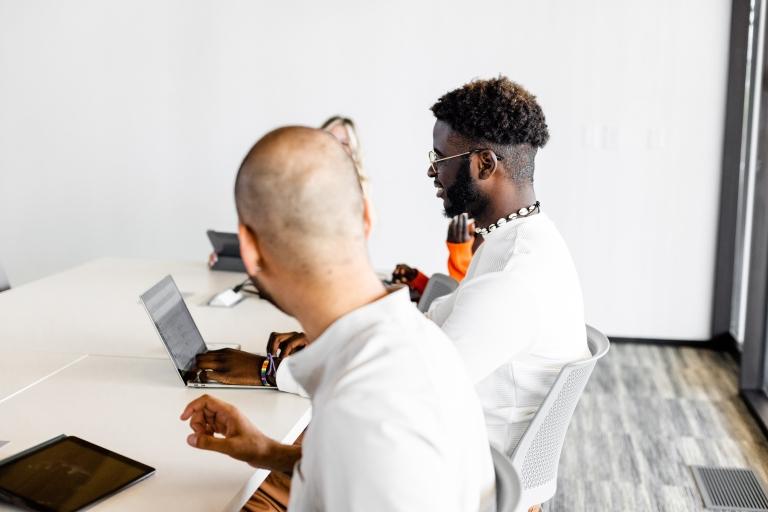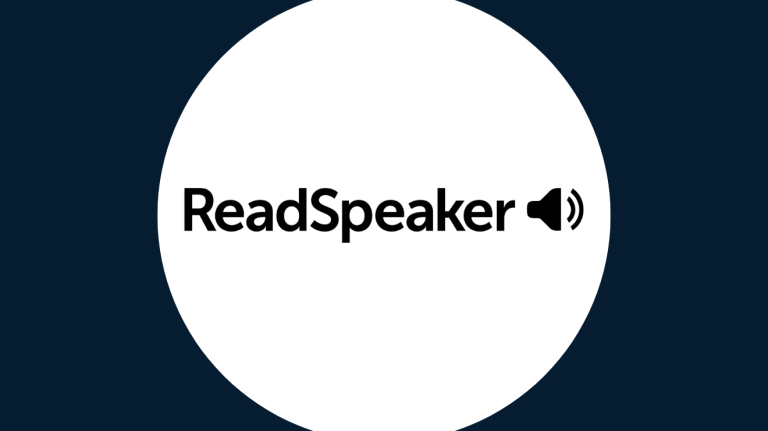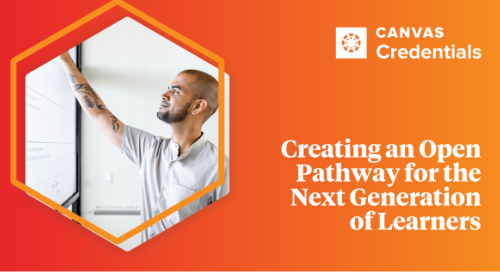We can all agree that the job market has changed to such a degree that our traditional methods of preparing learners for the workforce and assessing their career readiness are at a crossroads. Ensuring that these methods appropriately prepare learners for the workforce is as vital to higher education institutions as it is for employers. Questions about the efficacy of existing methods leave students wondering whether the value of an undergraduate education is even worth the (potentially quite high) cost of admission. Employers are searching for specifics — not necessarily specific academic achievements, but specific skills, experiences, and attributes that will increase prospective employees' likelihood of success.
Completing a four-year program is undoubtedly a notable learning achievement. However, hiring managers' decisions are increasingly less influenced by a credential some see as having a too-general focus. The shift toward a free and open system of verifiable learning achievements has already begun in earnest, and semantics aside, badges or micro-credentials will be the gold standard for learners to create their own pathways to the careers of the future, some of which have yet to be imagined.
Back in 2011, when the Mozilla Foundation created a technical standard called Open Badges, it established a new way to digitally verify learning achievements. The idea was brilliant in its simplicity, and it set the stage for a type of learning assessment that can follow learners from the cradle to the grave.
Open Badges are based on an open standard and can be issued and received by anyone at no cost for any reason, and there are multiple places online where you can quickly and easily become an issuer. For higher education, badges represent an alternate mechanism of documenting learning achievements that allow institutions to show value to students and to employers who demand more information than a simple letter grade can provide. As a community, we have a few details to iron out before we flip a switch and make wholesale changes to the traditional measures of learning outcomes. But to quote Bob Dylan, the times they are a-changin'.
Technically, an Open Badge is a digital image file with additional, non-image data added to the file at the time of creation. The descriptive metadata includes the badge name, the issuer, the earner, and the criteria met to earn the badge. It may also include a URL associated with the issuer, a link to evidence of learning achievement, and the level of alignment to educational frameworks.
Open Badges can be issued in a variety of simple ways. Typically, you enter an identifier (usually a learner's email address) into the issuing platform, and the badge is sent to that identifier. Badges can also be issued in the Canvas Credentials system by scanning a QR code with a cell phone or retroactively analyzing learner performance data captured via xAPI. With the robust new Open Pathways standard, learners can navigate learning pathways and stack badges to earn master badges, indicating progressive achievement. Perhaps more importantly, Open Pathways allows learners to discover new learning opportunities based on the credentials they already hold.
Learning takes place on many levels and in many environments. Open Badges can signify various learning events, such as viewing a museum science exhibit, mastering a middle school core competency, earning a high school diploma, or earning an advanced degree or technical certification. A traditional diploma indicates only graduation - Open Badges can provide a much more granular picture of a learner's achievements and skills from early childhood through adult learning.
For employers, the utility and quality of a badge are easily determined by verifying the issuer and the criteria required to earn it. Employers, who increasingly search for verifiable skill sets instead of degrees, can review an applicant's badges to quickly and accurately determine if the individual is the right fit for a position. Applicants can decide which skills employers are looking for to direct their learning efforts better.
These are the sorts of developments that are needed to connect education outcomes with workforce development more effectively. At Instructure, we firmly believe this work should be based on open standards and technology whenever possible. Moreover, we believe that a focus on open standards will enable Canvas Credentials and the broader digital badging movement to better meet the needs of the various stakeholders at the rapidly evolving nexus between education and the workforce. As we've seen with the growing use of open standards across numerous industries, interoperability is a crucial first step toward creating data-driven practices that can help address questions of efficacy for students, educators, and employers.
This post originally appeared on Educause Review in March 2018.
Related Content
 inst-3step.jpg
inst-3step.jpgBlogs
 InvestinginanLMSforWorkplaceEducation.jpg
InvestinginanLMSforWorkplaceEducation.jpgBlogs
 readspeaker-blog.png
readspeaker-blog.pngBlogs
